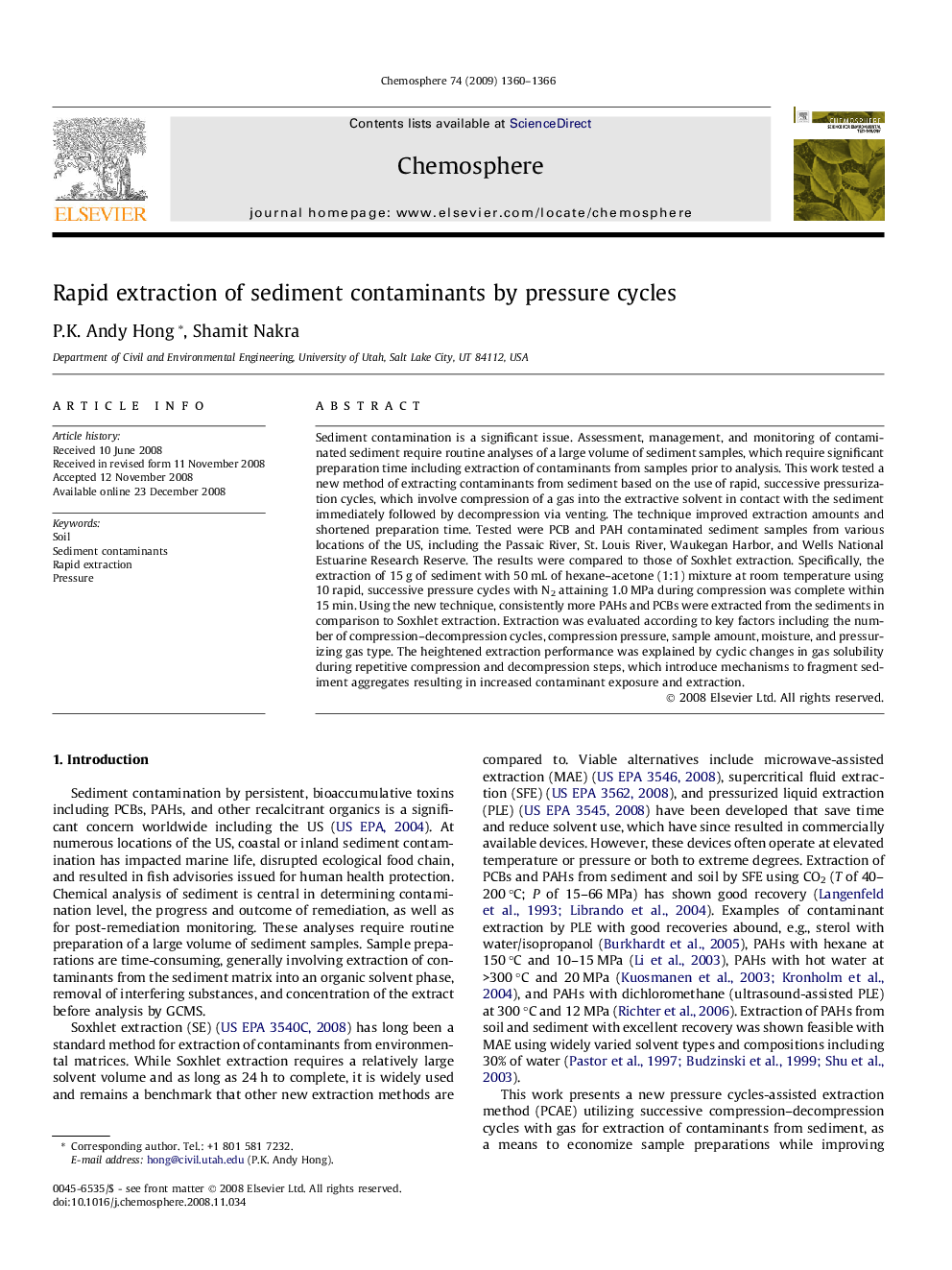| Article ID | Journal | Published Year | Pages | File Type |
|---|---|---|---|---|
| 4413194 | Chemosphere | 2009 | 7 Pages |
Abstract
Sediment contamination is a significant issue. Assessment, management, and monitoring of contaminated sediment require routine analyses of a large volume of sediment samples, which require significant preparation time including extraction of contaminants from samples prior to analysis. This work tested a new method of extracting contaminants from sediment based on the use of rapid, successive pressurization cycles, which involve compression of a gas into the extractive solvent in contact with the sediment immediately followed by decompression via venting. The technique improved extraction amounts and shortened preparation time. Tested were PCB and PAH contaminated sediment samples from various locations of the US, including the Passaic River, St. Louis River, Waukegan Harbor, and Wells National Estuarine Research Reserve. The results were compared to those of Soxhlet extraction. Specifically, the extraction of 15Â g of sediment with 50Â mL of hexane-acetone (1:1) mixture at room temperature using 10 rapid, successive pressure cycles with N2 attaining 1.0Â MPa during compression was complete within 15Â min. Using the new technique, consistently more PAHs and PCBs were extracted from the sediments in comparison to Soxhlet extraction. Extraction was evaluated according to key factors including the number of compression-decompression cycles, compression pressure, sample amount, moisture, and pressurizing gas type. The heightened extraction performance was explained by cyclic changes in gas solubility during repetitive compression and decompression steps, which introduce mechanisms to fragment sediment aggregates resulting in increased contaminant exposure and extraction.
Related Topics
Life Sciences
Environmental Science
Environmental Chemistry
Authors
P.K. Andy Hong, Shamit Nakra,
